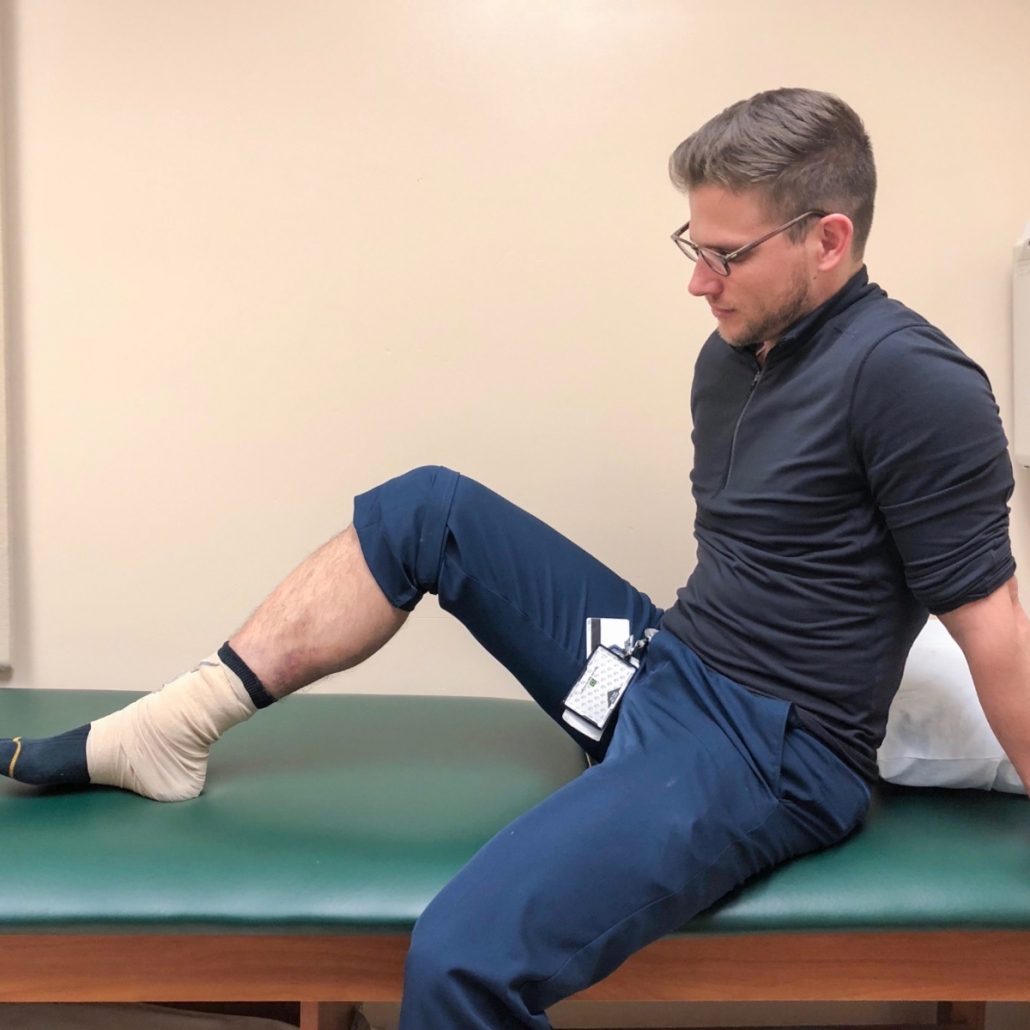 What are you supposed to do after experiencing an acute muscle strain or ligament sprain? For decades, people have been told that Rest, Ice, Compression, and Elevation (RICE) will expedite recovery and enhance healing. But is this so? In 1978, Dr. Gabe Mirkin authored The Sportsmedicine Book in which he first used the acronym, RICE. Though it remained the gold standard treatment approach for acute musculoskeletal injuries for years, newer investigations have led many researchers and clinicians, including Dr. Mirkin, to question the appropriateness of rest and ice in injury recovery. In fact, a review of 22 scientific articles published in The American Journal of Sports Medicine in 2004 found almost no evidence that ice and compression hastened healing over the use of compression alone.
What are you supposed to do after experiencing an acute muscle strain or ligament sprain? For decades, people have been told that Rest, Ice, Compression, and Elevation (RICE) will expedite recovery and enhance healing. But is this so? In 1978, Dr. Gabe Mirkin authored The Sportsmedicine Book in which he first used the acronym, RICE. Though it remained the gold standard treatment approach for acute musculoskeletal injuries for years, newer investigations have led many researchers and clinicians, including Dr. Mirkin, to question the appropriateness of rest and ice in injury recovery. In fact, a review of 22 scientific articles published in The American Journal of Sports Medicine in 2004 found almost no evidence that ice and compression hastened healing over the use of compression alone.
Rest
Have you been told to completely stop all activity until an injury is healed? This may actually be counterproductive. As long as an injury has been evaluated in order to determine that no bones are broken and that movement will not increase damage, early mobilization of an injured area is likely to provide benefit by facilitating proper blood flow and removal of cellular waste products. In the case of an ankle sprain, for example, regularly drawing the alphabet with the ankle during the first few days after injury has been shown to expedite recovery.
Beyond the first few days, appropriate application of load stimulates metabolic processes of repair within the injured tissue. When you engage in movement, you are sending instructions to the cells throughout the area of injury, encouraging those cells to function in a coordinated manner in order to heal and fortify the body. In the November 2017 article titled How to Treat Tendon Injuries – Part One, we reviewed the ways in which exercise can be used to facilitate tendon healing according to these principles.
ICE
What about ice? Many will argue that icing an injury prevents swelling and inflammation, which will result in faster recovery. This is not necessarily so. First, it is important to recognize that inflammation occurs for a reason. The body is smart. When we experience an infection, the body raises its internal temperature in order to assist in killing pathogens. Likewise, when we are injured, inflammation serves to initiate the repair and remodeling of tissue. When an injury occurs, local blood vessels dilate in order to allow healing cells to travel freely into the area. Some of these cells, known as macrophages, release a hormone called Insulin-like growth Factor (IGF-1), which is integral to the healing process. A study published in 2014 by the European Society of Sports Traumatology, Knee Surgery & Arthroscopy found that icing injured tissue shuts off the blood supply that brings healing cells to the area, and thus also decreases the concentration of IGF-1. What’s more is that the blood vessels have been shown to remain closed for many hours after ice was applied.
While it is true we want to limit excessive inflammation and facilitate removal of inflammatory byproducts from the injury site, icing does not do this. In fact, it has been shown to reverse lymphatic drainage and push fluid back into the interstitial space in addition to making lymphatic vessels more permeable.
Dr. Mirkin, the original RICE man himself, now recommends skipping ice altogether, unless pain is unbearable. If that is the case, he suggests applying ice packs only two or three times for 15 to 20 minutes with at least an hour in between.
Compression & Elevation
Now that rest and ice are falling out of favor in the realm of sports medicine, we’re left with a loss of letters to make a memorable acronym. Perhaps COMPEL will do since COMPression and Elevation continue to demonstrate benefit in cases of acute injury in order to limit excessive inflammation and swelling without compromising healing.


